Striking Gold
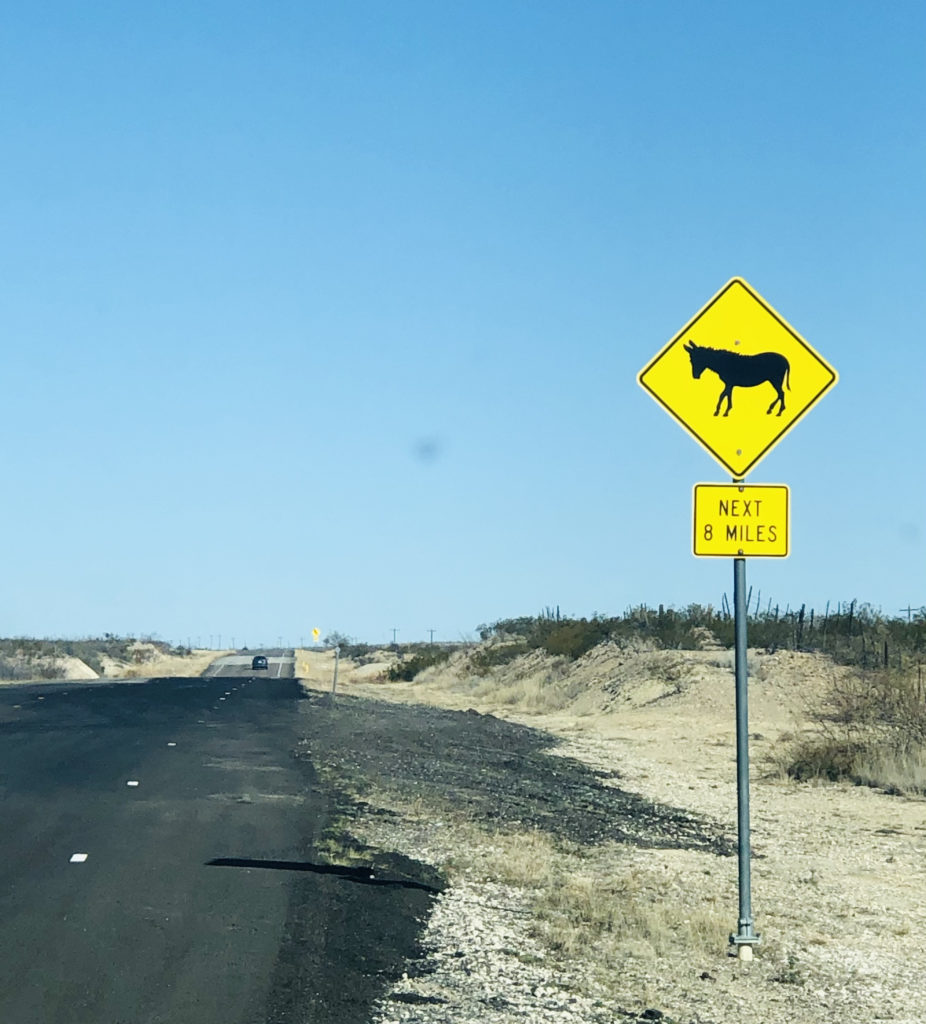
“Give me two reasons why anybody would want to live in Texas,” I said to cousin Weldon. I was probably nine at the time and I’d only passed through the Lone Star State once on a cross-country trip my family had taken three years before in the summer of 1966. We had a Volkswagon bus, and I’d been stuck in the back seat, sweltering, so I wouldn’t bug my sister, for the last 1,500 miles. Looking out the window of that VW, Texas had looked to me a whole lot like Bakersfield CA, except that it was a whole lot bigger- indeed, it seemed to go on forever. I wasn’t in love with it. But Weldon was, having had the good fortune to have been born there, and at 12 years of age, he had the maturity and confidence to answer me boldly and unequivocally.
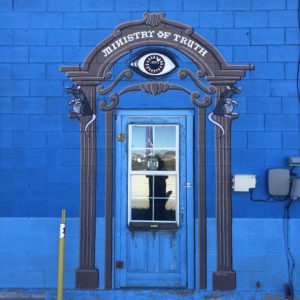
Drive up window for a liquor store somewhere in Texas.
“Dallas Cowboys, Houston Oilers,” Weldon said, without a moment’s hesitation, before reciting the litany of Texas’s endless charms and marvels; the coldest beer, the hottest women etc. etc. And while I’ve remained amused by the average Texan’s oversized pride of place, even into adulthood, I’ve gained a more nuanced appreciation for Texas. Bottom line; despite the state’s insane politics, Texas really IS big, and it’s big enough to embrace a kaleidoscope of characters that defies any attempt to simplify or pigeonhole it. There’s Willie, of course, who I think is a truly great American, but there are a growing number of my own family members there, and I’ve had an opportunity to make some friends there over the course of a number of trips. Last winter, Starr and I passed through “miles and miles of Texas” on our way to visit my cousin, Elizabeth, in Houston, and we had an opportunity to visit my friends, the Arnoskys, at their flower farm near Blanco, up in the Hill Country.
I met Pamela and Frank Arnosky years ago at the Texas Organic Farmers and Gardeners Convention, that was held that year down on South Padre Island on the gulf coast. Later, after a subsequent conference held up in Kerrville in the Hill Country, I had an opportunity to visit their farm. No farmer anywhere would ever suggest that the interior of Texas is the easiest place in the world to grow organic cut flowers, but they’ve done a magnificent job. I could write a whole essay about how systematically and generously they’ve gone about the task of growing flowers and the mission of creating community, but today I want to talk about just one flower; the marigold.
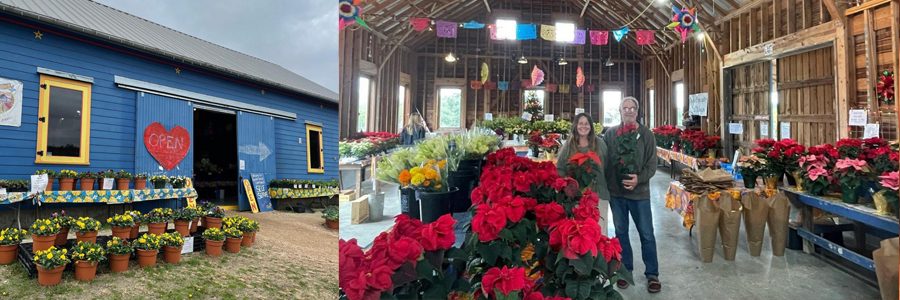
Andy and Starr inside the Big Blue Barn at the Arnosky’s Flower Farm.
Frank and Pamela are not just good growers- they’re very thoughtful and innovative about marketing. They’d always grown marigolds and over time they developed a reputation for having beautiful, clean, sturdy, and affordable marigolds at exactly the right time for the Dia de Los Muertos celebrations that are a yearly tradition in the Hispanic community. The Arnosky’s flower farm is out in the boonies, but it’s more or less equidistant between San Antonio and Austin. So it wasn’t too long before the Southern Asian communities that have sprung up around Austin found out about them and began arriving in the fall to get their marigolds for Diwalli, the festival of lights.
When farmers get together we usually seize the moment to bitch and moan about the weather, the prices, the regulations, the cost of fuel, packaging and labor, but we will usually trade tips on what crops have been working. As we listened to Frank and Pamela talk about their experiences growing marigolds it occurred to Starr and I that we ought to give the flower a try. Our farm is in the middle of a very vibrant Hispanic community and there are large populations of South East Asians nearby and, besides, who doesn’t think marigolds aren’t beautiful. Plus, from an organic perspective, marigolds make a good rotation crop, since their roots create natural chemicals that tend to depress the populations of pathogenic nematodes.
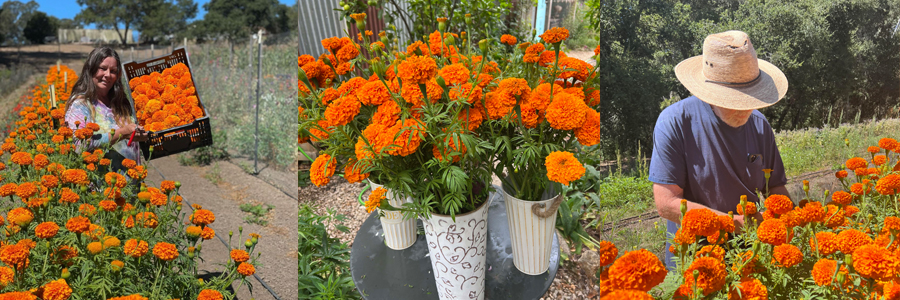
There are any number of marigold varieties available, but Frank hooked me up with a seed company out of Thailand that has the best marigolds for sacramental purposes. The type I chose to grow- which he recommended- is called Chedi, and the orange color is exactly the hue of the orange robes you’ll see Vietnamese Buddhist monks wearing. He also gave me suggestions for the best dates to drop seed in order to make the Diwalli/Dia de los Muertos harvest a bullseye. Conversations our foreman, Fidel, had with local Oaxacan growers confirmed the dates that work best at this latitude and we made plans. But because I’d never grown Chedi before, I planted a series of small crops to have an opportunity to learn the crop. I ended up learning a whole lot more.
Our friend, Jordan, who owns and operates Happy Girl Kitchen in Pacific Grove, came by the farm to pick up a quantity of dry farmed early girls to can and she saw one of my experimental rows of marigolds. She was stoked. I didn’t know it, but one of my test plantings of Chedi was blooming just in time for two important celebrations; Balarm’s Presentation, and Krishna’s Birthday. She asked to get a large quantity of blooms for the temple she’s a member of up in Mountain View. It was a lot of fun getting all the blooms picked, and she sent us some great pictures of the garlands that the people in the temple created.
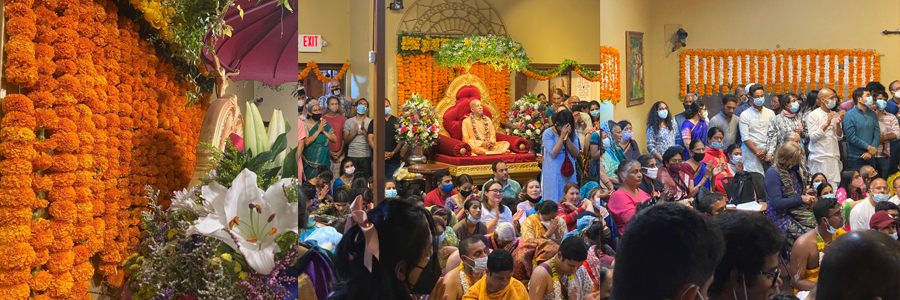
If you want to check out the farm in early October, come on out to see a handful of farms on the central coast, ours included, during the Open Farm Tours on October 8th.
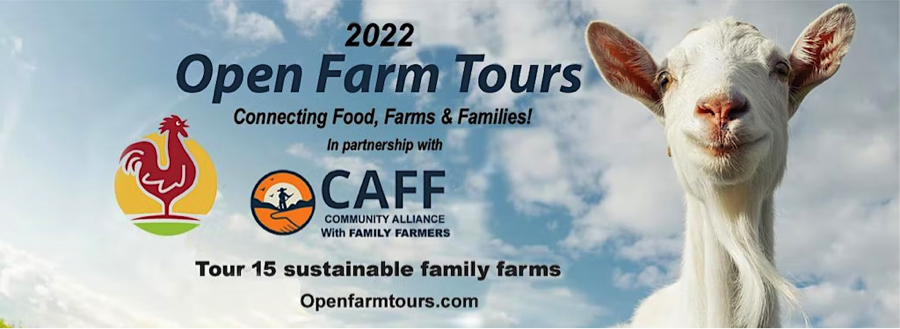
Thanks again for all your support!
Andy and the Crew at Mariquita Farm
© 2022 Essay by Andy Griffin
Photos of locations in Texas and of Starr harvesting Marigolds at Mariquita by Andy Griffin.
Photos of Marigolds and Andy harvesting them by Starling Linden.
Photos of Marigolds at Temple by Jordan Champagne.


